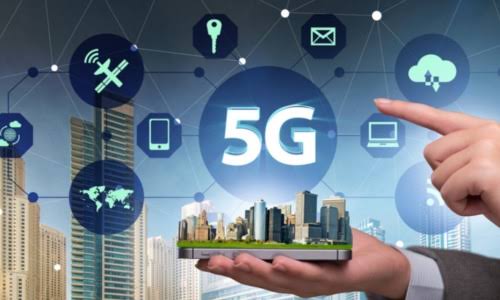The rise of remote work has transformed how organizations function, and internet connectivity plays the most critical role in ensuring efficiency. As 5G networks expand globally, they are revolutionizing the way remote work is carried out. Offering faster speeds, lower latency, and greater reliability, 5G goes beyond being just another upgrade in connectivity. It is shaping how teams communicate, collaborate, and manage workflows across different time zones and locations. Understanding its impact on productivity helps us see how remote work will continue to evolve in the coming years.
Faster Internet Speeds for Seamless Work
One of the greatest benefits of 5G networks for remote work is their ability to deliver ultra-fast internet speeds. Unlike 4G, which often struggles with heavy data applications, 5G provides the bandwidth necessary for high-quality remote work tools.
- Employees can download and upload large files without long delays.
- Video conferencing tools run smoothly, even with multiple participants.
- Cloud-based applications perform efficiently with faster response times.
This improvement reduces wasted time on technical delays and ensures that productivity remains uninterrupted.
Low Latency Enhancing Real-Time Collaboration
Latency, the delay between sending and receiving data, plays a significant role in remote collaboration. With 5G, latency is drastically reduced compared to earlier generations of mobile networks.
- Teams can interact in real-time during virtual meetings without interruptions.
- Collaborative platforms like digital whiteboards and co-editing software work more effectively.
- Industries that require instant communication, such as finance or healthcare, benefit from quick decision-making.
This real-time responsiveness strengthens teamwork and helps employees feel more connected despite working remotely.
Reliability and Connectivity Stability
Remote workers often struggle with unstable connections, especially in regions where internet infrastructure is limited. 5G provides stronger and more reliable connectivity, which directly enhances productivity.
- Stable connections ensure that workers face fewer dropped calls and meeting disruptions.
- Employees in rural or less developed areas gain better access to reliable internet.
- Businesses experience fewer losses in communication and efficiency due to technical failures.
This level of dependability allows remote employees to focus on tasks without worrying about connectivity problems.
Support for Advanced Remote Work Technologies
5G networks are not just faster; they are designed to support a wide range of advanced technologies that boost remote work.
- Virtual and augmented reality tools enable immersive training and collaboration.
- Cloud-based applications run with near-instant responses, improving workflow management.
- AI-driven productivity tools process data quickly and deliver insights in real time.
By supporting these technologies, 5G makes remote work more dynamic and innovative, allowing businesses to adopt smarter solutions for managing teams.
Improved Video Conferencing Experiences
Video conferencing has become the backbone of remote work, but it often suffers from lags and poor video quality on slower networks. 5G ensures high-definition video and smooth audio, enhancing the effectiveness of online meetings.
- Employees can participate in conferences without pixelated screens or audio delays.
- Group meetings with many participants become more manageable.
- Remote client presentations become more professional and engaging.
This improvement in communication leads to stronger collaboration and better decision-making.
Enabling Greater Flexibility for Remote Teams
One of the long-term impacts of 5G on productivity is the flexibility it offers. Workers are no longer tied to high-speed WiFi connections at home but can work effectively from almost anywhere.
- Remote employees can stay productive while traveling.
- Teams in different locations can stay connected with fewer barriers.
- Hybrid work models become easier to manage with consistent connectivity.
This flexibility increases employee satisfaction and work-life balance, both of which indirectly enhance productivity.
Enhancing Cybersecurity Measures
With more employees working remotely, cybersecurity has become a critical concern. 5G networks include advanced encryption and security features that help protect sensitive data.
- Businesses can reduce risks of breaches in remote communications.
- Employees enjoy safer connections when working on mobile networks.
- Secure data transfer ensures compliance in industries with strict regulations.
Stronger security creates confidence in remote systems, allowing employees to focus on their work rather than worrying about risks.
Challenges and Considerations of 5G for Remote Work
While 5G has enormous potential, there are still challenges that organizations must address.
- The rollout of 5G infrastructure is uneven across countries and regions.
- Employees in areas without strong 5G coverage may not see immediate benefits.
- Businesses need to ensure that devices and software are compatible with 5G.
Despite these challenges, the overall benefits outweigh the limitations, and as coverage expands, more workers will enjoy the advantages of 5G-enabled productivity.
Conclusion
5G networks are redefining how remote work is carried out by improving speed, reliability, and connectivity. They make real-time collaboration more effective, support advanced technologies, and ensure smoother communication across teams. While challenges remain in terms of global rollout and accessibility, the impact of 5G on productivity is already visible in businesses that adopt it early. As the technology matures, remote work will continue to evolve into a more efficient, flexible, and collaborative system, powered by the high capabilities of 5G networks.



